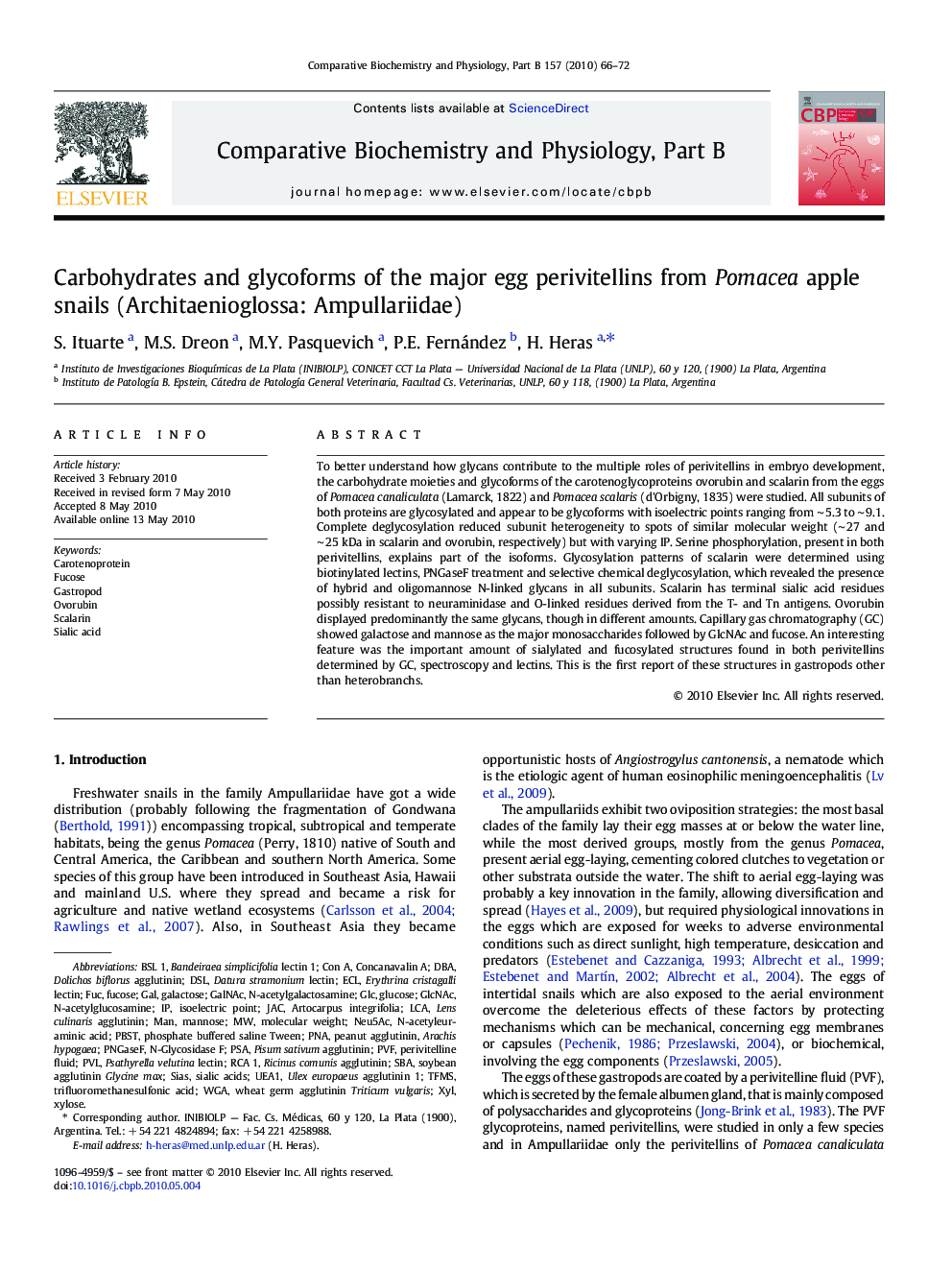| Article ID | Journal | Published Year | Pages | File Type |
|---|---|---|---|---|
| 1975981 | Comparative Biochemistry and Physiology Part B: Biochemistry and Molecular Biology | 2010 | 7 Pages |
To better understand how glycans contribute to the multiple roles of perivitellins in embryo development, the carbohydrate moieties and glycoforms of the carotenoglycoproteins ovorubin and scalarin from the eggs of Pomaceacanaliculata (Lamarck, 1822) and Pomaceascalaris (d'Orbigny, 1835) were studied. All subunits of both proteins are glycosylated and appear to be glycoforms with isoelectric points ranging from ∼ 5.3 to ∼ 9.1. Complete deglycosylation reduced subunit heterogeneity to spots of similar molecular weight (∼ 27 and ∼ 25 kDa in scalarin and ovorubin, respectively) but with varying IP. Serine phosphorylation, present in both perivitellins, explains part of the isoforms. Glycosylation patterns of scalarin were determined using biotinylated lectins, PNGaseF treatment and selective chemical deglycosylation, which revealed the presence of hybrid and oligomannose N-linked glycans in all subunits. Scalarin has terminal sialic acid residues possibly resistant to neuraminidase and O-linked residues derived from the T- and Tn antigens. Ovorubin displayed predominantly the same glycans, though in different amounts. Capillary gas chromatography (GC) showed galactose and mannose as the major monosaccharides followed by GlcNAc and fucose. An interesting feature was the important amount of sialylated and fucosylated structures found in both perivitellins determined by GC, spectroscopy and lectins. This is the first report of these structures in gastropods other than heterobranchs.
